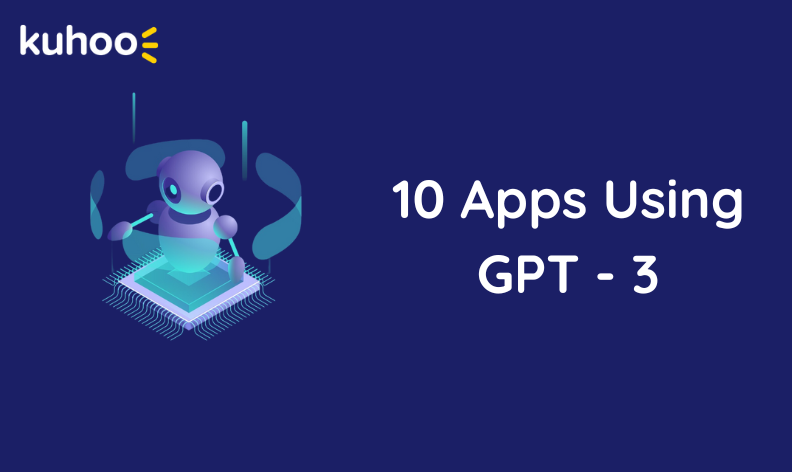Blog 
 Back
Back

10 Fantastic GPT-3 Applications
The new language model, GPT-3, was created by OpenAI and released in 2020. One of the most complex AI models ever made, GPT-3 has over 175 billion parameters and is currently the industry standard for many natural language generation tasks.
Here, we list 10 of the most intriguing examples of GPT-3-using real-world applications.
1. Algolia
Algolia’s goal is to make it possible for website owners to use a strong and accurate search engine for their catalog. Using GPT-3, Algolia is able to determine the precise meaning of the user’s query, yielding results that are more precise than those returned by conventional keyword-based search engines.
2. Viable
Any business looking to improve must take user feedback into account. How can this be done when there are thousands of feedbacks? This is a workable solution. Viable can read thousands of comments using GPT-3 and summarise them in only a few lines long reports, giving designers an essential tool to enhance their goods or services.
3. MessageBird
MessageBird is an additional tool to enhance client communication. From support calls to WhatsApp notifications, MessageBird is an omnichannel platform that streamlines all of your client communications. GPT-3 ensures that all messages sent through this service are accurate and trustworthy.
4. DeBuild.co
Even though it seems impossible, GPT-3 is capable of writing high-quality code in addition to producing natural language texts. As an illustration, consider DeBuild.co, a tool that enables the creation of entire websites from textual descriptions, assisting developers in the creation of React components, the generation of SQL code, and the deployment of their websites.
5. MagicSalesBot
Writing cold emails is one of the marketing professionals’ least favorite tasks, and Magic Sales Bot automates it. In addition to sounding entirely natural, emails written by this bot that use GPT-3 have a twofold increase in response rates over conventional emails.
6. FableStudio
FableStudio offers an alternative. FableStudio created virtual beings, or avatars, using GPT-3, which you can communicate with using common messaging apps like WhatsApp, Skype, or Messenger. After speaking with one of them, it becomes obvious that in the future, the gap between humans and computers will close as AI becomes more adept at comprehending our feelings and emotions.
7. AI Replier
Replier.ai addresses the same issue that Viable attempts to address: the handling of an excessive number of user feedback and reviews. Replier.ai allows you to generate responses automatically, demonstrating a level of attention to your users’ opinions that would be impossible to achieve otherwise.
8. ABTesting.ai
ABTesting.ai is an intriguing combination of GPT-3 and traditional statistics tools. The goal of this app is to generate the best user reactions by creating headlines and calls to action. ABTesting.ai generates different combinations of the initial title using GPT-3 before testing them using an approach known in statistics as A/B testing. As a result, the app not only generates captivating titles but also provides a concrete explanation of why these titles are superior to others.
9. Epsilon Code
EpsilonCode is another app that helps developers with coding. EpsilonCode is a tool for writing and debugging Python code from natural language descriptions.
10. Grok
The final app, Grok, is a Slack application that summarises messages received throughout the day. Users will no longer waste time looking through all of their conversations or reading all of the messages in all of their channels if they use Grok; instead, they will receive a brief but comprehensive summary of what they missed.



